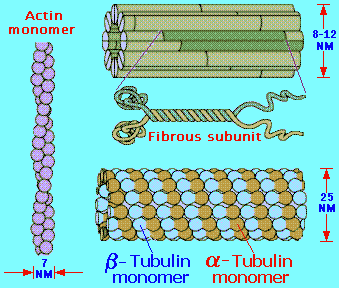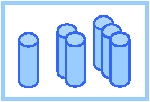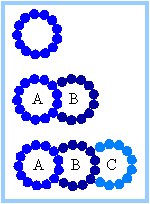The Barcode Model of Evolution
Oh My God!
Pg. 22
Origin of 3s Hunters as of 10/17/2024
| 1 | 2 | 3 | 4 | 5 | 6 | 7 | 8 |
| 9 | 10 | 11 | 12 | 13 | 14 | 15 | 16 |
| 17 | 18 | 19 | 20 | 21 | 22 | 23 |
Where humans in the present era have manufactured two types of barcodes:
- 1D (one-dimensional), and 2D (two-dimensional) [with 3 divisions:]—(along with a binary black and white striping as well as start and stop characters)...
The tripartition of Life on the other hand, has been manufactured as a
3D (three-dimensional) barcoded model Interspersed between two {"white noise"}
quiet zones.

Even though there may be some who are obsessed with creating an other-than-three compilation by declaring their favorite number is not three, may not be
fully aware of the totality
 of their day-to-day behavior where some model of the three is exhibited in clothing, jewelry, tools, pets, chores, entertainment interests, meals, vehicles,
children, etc... For example, a woman says her favorite number is 7 or 13 or... yet she has three pets, or three children, or 3 jobs, or 3 favorite foods,
etc...
of their day-to-day behavior where some model of the three is exhibited in clothing, jewelry, tools, pets, chores, entertainment interests, meals, vehicles,
children, etc... For example, a woman says her favorite number is 7 or 13 or... yet she has three pets, or three children, or 3 jobs, or 3 favorite foods,
etc...
Alternatively we can describe the "three" as the base camp from which many explore less or more-than-three considerations such as for example someone claiming there are more-than-3 dimensions... such as in String Theory [The number of dimensions is said to vary (10, 11, 26) with the specific sub-group of string theory or M-theory you are referring to, but they all have the same three types of dimensions. Three spatial dimensions. Known in common English as "depth", "width", "height".]
With respect to a Base Camp Marker for Biological development, we can use the 3-step Central Dogma of Biology illustration:


You will not customarily come across the idea of Evolution or Biological processes occurring along a numerically designated 1- 2- 3 maturational development sequence, though the 1 - 2 - 3 Germ layers are an easily identifiable representation such that the more complex organisms come from 3 layers and are called Triploblastic, lesser complex organisms come from 2 layers and are called Diploblastic, which leaves us with the 1 layer Monoploblastic where there appear to be no extant examples except for the controversial considered Sponges whose initial development occurred in a very distant past and all other representatives of a single Germ layer have not survived. However, interestingly, another 1- 2- 3 example occurs in the cellular structure called Microtubules. We can see a single, double and triple conformation... with the triple model being used by some to suggest a link with the origination of consciousness. If Microtubules are a pre-life organelle and do indeed have a connection with consciousness, then we might consider the development of consciousness occurring in a 1- 2- 3 step fashion as well. Here is a link where a discussion of Consciousness involving Microtubules is proposed. In this link cells are proposed as being intelligent.
With respect to the cell and the importance of Microtubules:
The cytoskeleton is a structure that helps cells maintain their shape and internal organization, and it also provides mechanical support that enables cells to carry out essential functions like division and movement. There is no single cytoskeletal component. Rather, several different components work together to form the cytoskeleton. The cytoskeleton of eukaryotic cells is made of filamentous proteins, and it provides mechanical support to the cell and its cytoplasmic constituents. All cytoskeletons consist of three major classes of elements that differ in size and in protein composition:
- Microtubules are the largest type of filament, with a diameter of about 25 nanometers (nm), and they are composed of a protein called tubulin.
- Actin filaments are the smallest type, with a diameter of only about 6 nm, and they are made of a protein called actin.
- Intermediate filaments, as their name suggests, are mid-sized, with a diameter of about 10 nm. Unlike Actin filaments and Microtubules, Intermediate filaments are constructed from a number of different subunit proteins.

The cytoskeleton is a network of 3 types of protein polymers, namely the Microtubules, the intermediate filaments and the microfilaments. It also contains numerous proteins that are associated with the fibrous polymers. They nucleate, bundle, cap and link the fibers with each other, with cell organelles and the plasma membrane. It is the mechanical and functional framework for every known cellular function.
Microtubules ~ Intermediate Filament ~ Actin Filaments
 ---Northwestern.edu Glossary --- |
 |
Fibrous proteins that occur in the cytoplasm, referred to as the cytoskeleton maintain the shape of the cell as well as anchoring organelles, moving the cell and controlling internal movement of structures. Microtubules function in cell division and serve as a "temporary scaffolding" for other organelles. Actin filaments are thin threads that function in cell division and cell motility. Intermediate filaments are between the size of the Microtubules and the actin filaments. | |
In doublet and triplet microtubules the wall of one microtubule partly consists of the wall of an attached microtubule. (In other words, there is a type of overlapping... or, if you will... a type of fusion. Just like the Sun's three "moments" [dawn- noon- dusk] that will one day "fuse" into 1 as the Sun enlarges and the Earth's rate of rotation slows.) |
 |
The image at right represents singlet, doublet, and triplet microtubules in cross section. The A tubule of
a doublet or triplet microtubule is a complete cylinder, made of 13
protofilaments. "Piggyback" B or C tubules are made of less than 13
protofilaments, usually 10. |
 |
Source: Bio-Physiological 3s page 1
Three subgroups of microtubules aid in the process of mitosis: astral, polar, and kinetochore microtubules. Astral microtubules radiate from the MTOCs of a cell to the cell membrane, keeping the mitotic spindle in place. Polar microtubules intertwine between two MTOCs (microtubule organizing centers) and help separate chromosomes.
Source: Microtubule Definition
Out of all the Organelles, the focus is on the structure with an easily identifiable "3" structure, though one could consider that consciousness... if it is linked with Triplet Microtubules, that the singlet and doublet models are related to some "before" or preceding variation, suggesting consciousness may have a 3-step developmental procedure and even perhaps exists in three forms. In any respect, the cognitive appeal of the "three" shows up in many varieties along multiple paths. Along with a discussion of Consciousness and the proposed idea three forms or 1 form with 3 identities or emerging by way of a 3-step process, one might think of the plausibility when we encounter such notions as the 3 divisions of nature with attendant souls characterized by Aristotle and the overall Nature of the human soul construed with the dimensions of a body- soul- mind. No less, to these let us add the view of three souls referenced as a young soul- old soul- ancient soul. In several cases we find those who assimilate the idea of three souls based on either Aristotle or Plato, while others become creatively adventuresome and design alternative ideas... yet still retain an underlying three-based formula where the word "soul" takes on a personalized reference related to relationships often described in dichotomous terms:
(The following images are links to their sources:) (According to Plato, The philosophic-rational people were born with gold, the spirited-courageous ones with silver, and the appetitive ones with bronze.) |
 |
 Tripartite Ideology The trifunctional hypothesis (by Georges Dumezil) of prehistoric Proto-Indo-European society postulates a tripartite ideology ("idéologie tripartite") reflected in the existence of three classes or castes—priests, warriors, and commoners (farmers or tradesmen)—corresponding to the three functions of the sacral, the martial and the economic, respectively. |
 |
 |
 |
Most often we see references to the "three" incorporated into Metaphysical, Philosophical, Religious and Mythological themes construed in attributes to be personalized, because it is difficult for some to relate to intricate and intimate materials from subjects with a mathematical or science orientation. Nonetheless, the use of "three" is a commonly used rule of thumb. However, let us not overlook how very limited is the quantity of alternative ideas. Whereas different languages use different words, it may be the case that in all cultures we find a similar limitation we can alternatively describe as a Conservation of Number, if not a Conservation of Qualitative description, definition and depiction in music, myth, mathematics, etc...

If we itemize the 3-part reference of Body- Mind- Soul, we have already seen how the Soul is described in a Tripartite fashion. As for the body, we have several examples culled for different life forms:
- 3 animal body cavity types based on the coelem:
- Acoelomates, no body cavity
- Pseudocoelomates, false body cavity
- Coelomates, true body cavity

|
|
- 3 human body types: Ectomorph- Mesomorph- Endomorph (seen also in how the Buddha is portrayed in statues)
- 3 insect body divisions: Head- Thorax- Abdomen (Arthropods)
- 3 parts of a plant: Roots- Stems- Leaves
- 3 parts of a plant seed: Embryo- Endosperm- Seed coat
- 3 different leaf forms of the Sassafras tree/shrub: an oval shape- a mitten shape- a three-lobed leaf
- 3 main body regions of molluscs:
- a head-foot, which is the sensory and locomotive part of the body.
- a visceral mass containing the excretory, digestive, and circulatory organs.
- the mantle, which secretes the shell.
- 3 types of body symmetry: Asymmetrical- Radial- Bilateral
- etc...


Initial Posting: Oct. 28th, 2024... 6:05 AM